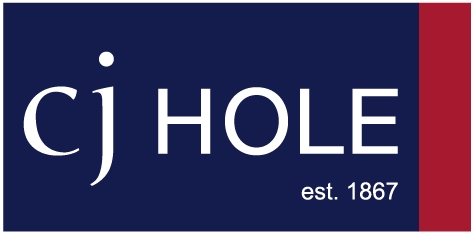Landlord insurance can be complicated, especially for new property investors, and covers a whole range of eventualities on top of the things you would associate with standard property insurance.
Here, we’ll explain everything you need to know about what landlord insurance is, what it covers, whether you need it, and how much it’s likely to cost you…
What is landlord insurance?
Landlord insurance is similar to standard home insurance but is tailored to cover all the risks associated with buy-to-let properties.
What does landlord insurance usually cover?
Most landlord insurance policies cover buildings, contents, and liability, but many more add-ons are available to protect you against other risks.
1. Buildings insurance
Buildings insurance is the main part of any landlord insurance policy and covers damage to the structure of your buy-to-let property and the costs of rebuilding should you need to.
Buildings insurance should cover you against:
- Theft, vandalism, and damage
- Flooding or lightning damage caused by a storm
- Flooding caused by burst pipes
- Fire and smoke damage
If your buy-to-let property is a leasehold flat, it’s likely a buildings insurance policy will be arranged by the freeholder, and you’ll pay a share of this alongside the other property owners in the building.
However, it’s also likely that a freeholder’s buildings insurance policy may not cover everything you require as a landlord, so always check what is covered by landlord insurance and take out your own additional policy if there are any gaps.
2. Contents insurance
The level of contents insurance you’ll require will depend on whether you’re letting out your property on a furnished or unfurnished basis.
The contents element of landlord insurance policies covers the costs of replacing or repairing items damaged by flooding or fire, including:
- Carpets
- Furniture
- Electrical items, including white goods
While most standard contents insurance won’t cover against accidental damage, some landlord policies can be extended to cover this.
3. Landlord liability insurance
Liability cover is one of the more unique elements of landlord insurance cover and it’s unlikely you’d find it in any standard home insurance policy.
Liability cover protects you if a tenant or visitor to your rental property is injured while they’re there.
Liability cover can run into millions of pounds, protecting you should you face a compensation claim from someone who suffers a serious injury while in your property.
4. Tenant default insurance
It’s a fact of being a landlord that you may have to deal with a tenant in rent arrears.
Tenant default insurance covers you against losses incurred if your tenant is unable to pay their rent.
It usually covers any legal costs of eviction or repossession proceedings, should you need to use them.
If you use a letting agent to manage your property, your contract may already include tenant default cover, also referred to as Rent and Legal Protection, so always check before taking out your own policy.
5. Emergency cover
Like rent arrears, services emergencies do sometimes occur when letting a property.
Emergency cover should protect you against the cost, repair and/or replacement should your tenants experience:
- Plumbing or heating failure
- Roof leaks
- Door and window problems
- Sewerage issues
- Infestation
- Loss of electricity
- Loss of keys
Boiler cover is sometimes included in landlord insurance, but not always – so be sure to check your policy and take out separate boiler cover if needed.
Do all landlords need landlord insurance?
Landlord insurance isn’t a legal requirement.
However, a standard home insurance policy won’t cover you once your property is let out.
And most mortgage lenders will require at least a buildings insurance policy to be in place before any tenancy begins.
What if I’m renting to family members?
Even if you’re renting your property to someone in your family, you’ll still need a specialist landlord insurance policy rather than standard home insurance.
What if I’m living in the property with tenants?
A specialist landlord insurance policy will still be required even if you’re living in the property alongside a tenant or tenants.
What if I have a lodger who is only renting a room?
Most standard home insurance policies over offer cover if you’re living in your property with immediate family.
Even if you have a lodger who is only renting a room in your home, you will almost certainly require a landlord insurance policy to protect you.
Is landlord insurance worth having?
Landlord insurance is there to protect you and your asset – so it’s definitely worth having.
If you own your buy-to-let with a mortgage, your lender will almost certainly insist on a landlord insurance policy that covers the building.
Additional elements like contents insurance, liability insurance and tenant default insurance, meanwhile, can protect you against potentially huge costs.
How much is landlord insurance?
Landlord insurance policies can vary in cost depending on a number of circumstances, including:
- The location, age and type of property you’re renting out
- The number of tenants living in the property
- The projected rebuild cost of the property
- The value of any contents
- The amount of excess you choose to have
Emily Kindness, Business insurance expert at comparethemarket.com
says:
“The cost of landlord insurance varies depending on factors such as size of the property and the type of cover you choose. You can help to reduce the cost of your insurance policy by demonstrating that you’re on top of risk management. For example, by having ample security measures in place and ensuring tenant referencing checks take place, when bringing in a new tenant.”
Landlord insurance jargon buster
Landlord insurance can be a complex area – particularly for new landlords.
Here are a number of terms you’re likely to hear when looking at policies, along with explanations on what they mean…
Buildings sum insured
This refers to the amount of money it would cost to rebuild your buy-to-let should it be destroyed by a fire or flood.
The amount includes:
- Materials
- Labour
- Site clearance costs
- Architect fees
You should always check your buildings sum insured amount each year – as any work you’ve had done on the property could mean the figure needs adjusting.
Claims history
Your claims history outlines the number of times you’ve made a claim on your landlord insurance policy.
Insurers will look at this information when providing you with a quote, as it helps them assess their risk and how much it would cost them to cover your buy-to-let.
Excess
Excess is the amount you pay towards any claim, before your insurer covers the remaining amount.
There will be a compulsory excess amount on your policy, which you must pay in the event of a claim, as well as a voluntary amount that you set when taking out the policy.
Generally, the higher your voluntary excess, the cheaper your policy will be.
Exclusions
Your landlord insurance policy will have a list of ‘exclusions’ – these are the things your insurer won’t pay for in the event of a claim.
Read through the exclusion list so you’re fully aware of what you’re covered for.
Indirect loss
Indirect loss is damage or destruction that happens as a result of other damage or destruction.
For example, if a fire caused severe damage to your buy-to-let, meaning your tenant had to move out, an indirect loss of the fire would be your rental income.
Your landlord insurance policy, therefore, should cover you for the cost of repairing the fire damage, but may not cover you for the indirect loss of rental income.
Invalidation
When you take out a landlord insurance policy, you’re required to meet the terms and conditions set out by the insurer.
For example, if your property is empty for longer than the maximum period stipulated in your cover, your insurance may be invalidated.
Peril
A peril is a specific risk covered by your landlord insurance – for example, flooding if your buy-to-let is at a clear risk from it.
Schedule
The schedule is the official document supplied by your insurer when you take out a landlord insurance policy.
It should include:
- Your details, including your name and address
- The address of the property being insured
- The period of the policy
- The cover you’ve taken out
- All terms and conditions
Waiting period
Some landlord insurance policies will have a waiting period.
This is the period between you taking out the policy and being able to make a claim.
Waiting periods are in place to stop you discovering that your roof is leaking, taking out an emergency cover policy and putting in an immediate claim.





